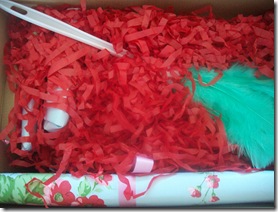
Nikki at The Scarlett Rose Garden is having a ball today to celebrate GWTW’s 70th Birthday so I thought in the spirit of my Wizard of Oz post I would share some facts on GWTW!

The movie's line "Frankly, my dear, I don't give a damn." was voted as the #1 movie quote by the American Film Institute (out of 100)
First colour film to win the Best Picture Oscar

The estimated production costs were $3.9 million
For the premiere in Atlanta in December 15, 1939, the governor declared a state holiday. Ticket prices for the premiere were 40 times the usual going rate

The first scene to be shot was the burning of the Atlanta Depot, filmed on 10 December 1938. If there was a major mistake during the filming, the entire film might have been scrapped. They actually burned many old sets that needed to be cleared from the studio backlot, including the set from King Kong (1933). The fire cost over $25,000, and yielded 113 minutes of footage. It was so intense that Culver City residents jammed the telephones lines, thinking MGM was burning down
In the scene where Rhett pours Mammy a drink after the birth of Bonnie, for a joke during a take, Clark Gable actually poured alcohol instead of the usual tea into the decanter without Hattie McDaniel knowing it until she took a swig

Vivien Leigh worked for 125 days and received about $25,000. Clark Gable worked for 71 days and received over $120,000.

Hattie McDaniel became the first African-American to be nominated for, and win, an Academy Award.

To add to the publicity, fans were asked to vote for the actress they think should play Scarlett. Out of hundreds of ballots cast, Vivien Leigh got only one vote

Olivia de Havilland always meticulously researched her roles. As she had not yet had a baby in real life, she visited a maternity hospital to study how various women coped with the stresses of childbirth for the scene where Melanie has her baby. Off-camera, the scene's director, George Cukor, would occasionally pinch her toes to make her feel pain

Clark Gable disliked this, his most famous film, which he regarded as "a woman's picture."


 image: Ad Classix
image: Ad Classix






















